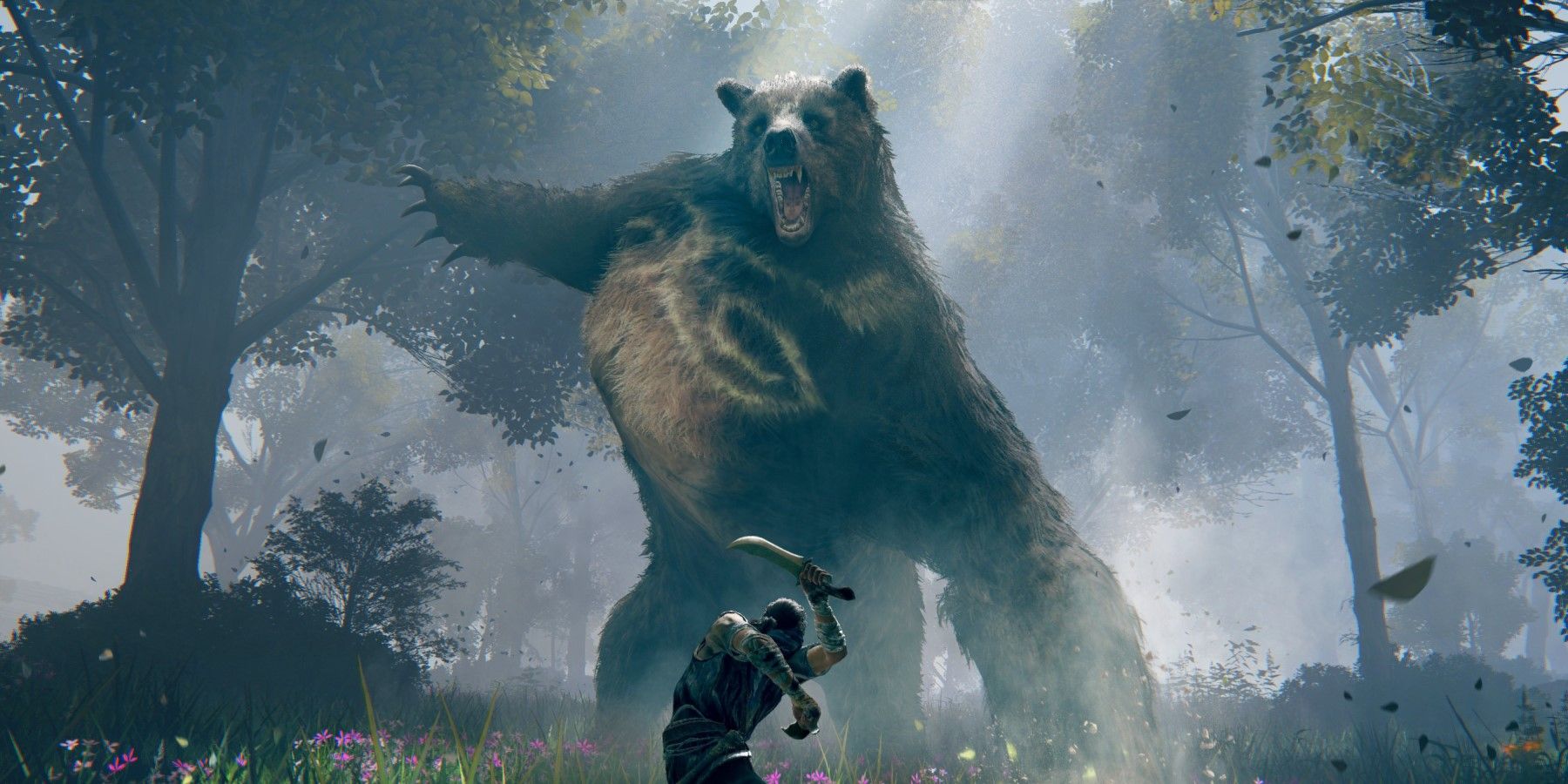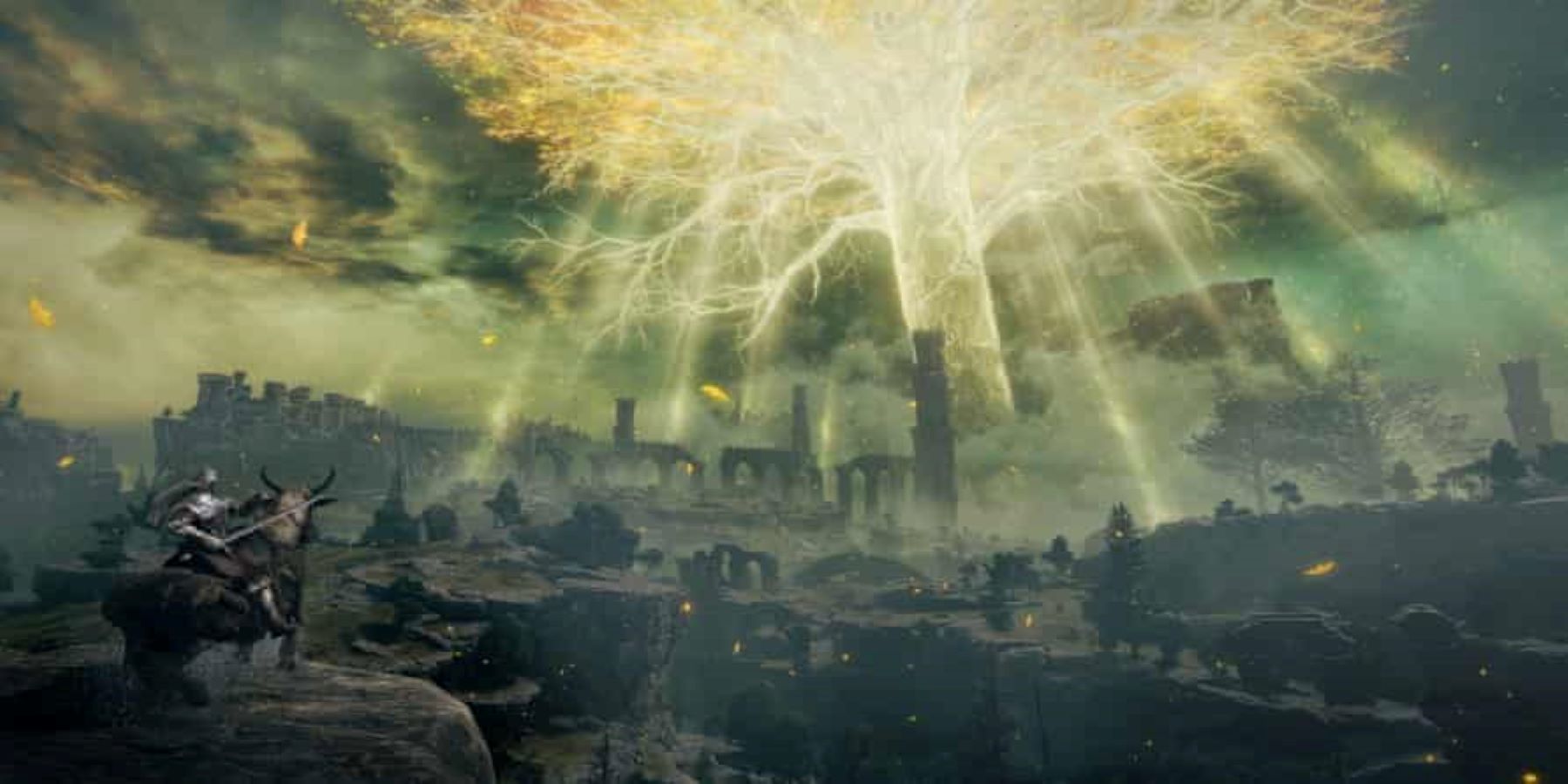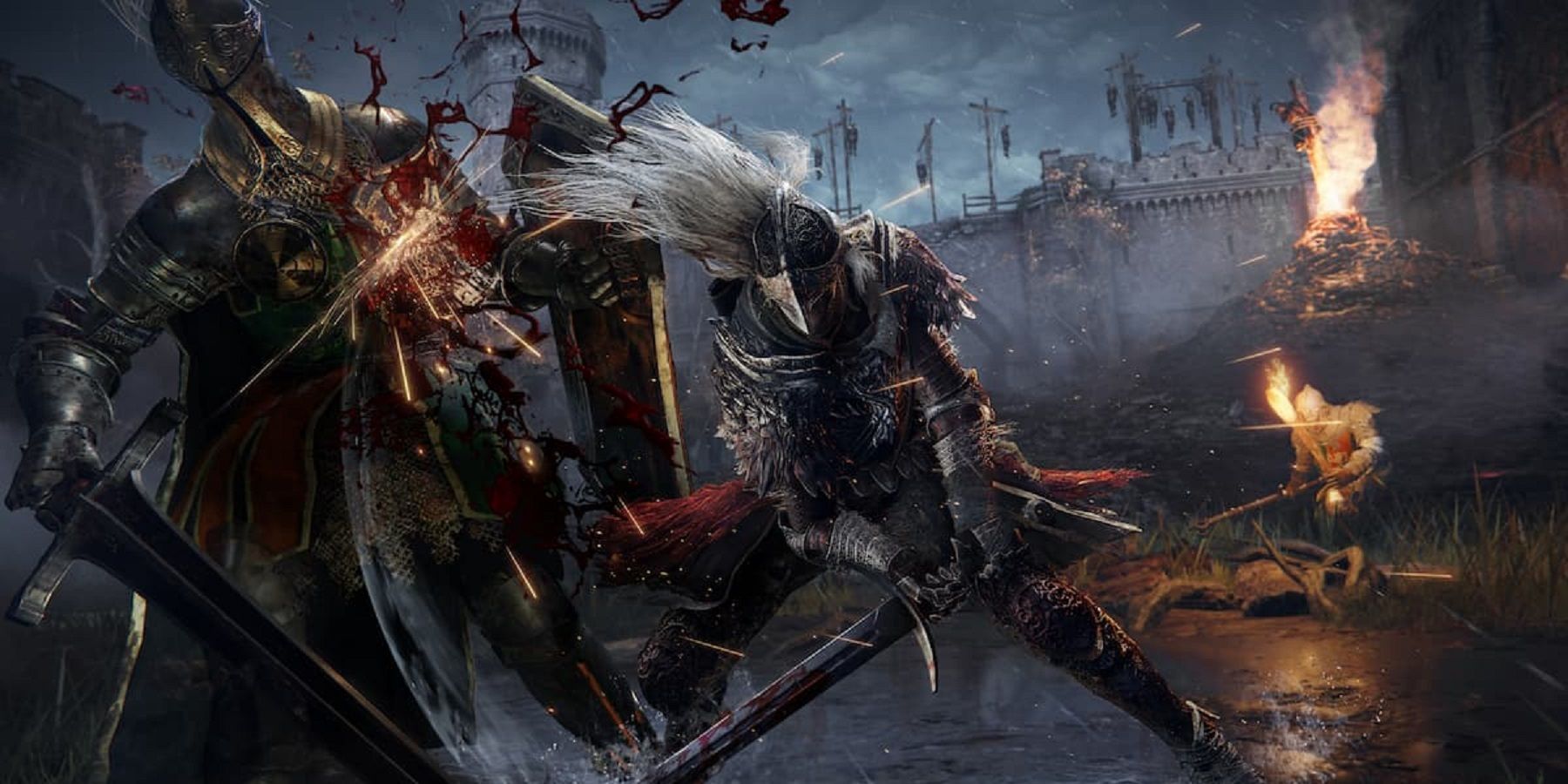Elden Ring, FromSoftware's latest offering, is set to release in February. Players will get to mount a steed and explore the Lands Between, which is being ruled by the offspring of Queen Marika the Eternal. Each of her children holds a fragment of the Elden Ring, and it corrupts them with power. In terms of gameplay, players can expect the typical well-timed close-combat that FromSoftware has perfected, although the game will bring plenty of new features to impress even the most longtime fans of the studio. The game's story, in typical FromSoftware fashion, should be cryptic yet alluring, and Hidetaka Miyazaki, who created the Souls series, shares writing credits with A Song of Ice and Fire's George R.R. Martin.
As Elden Ring's release date nears, the studio has been teasing gamers with screenshots showcasing the lush environments and fierce enemies to expect. One particular beast has caught the eye of many thanks to its large size and terrible claws. The bear appears to be one of the bosses that players will have to contend with at some point, but it does not seem like any ordinary bear. To understand what inspirations may have birthed the monstrosity, it would be useful to look at the myths behind Elden Ring.
Elden Ring Is a Mosaic of Myths
Elden Ring is an eclectic video game that draws from many sources. The most obvious source, as the game's name might hint, is Tolkien's Lord of the Rings. Both Miyazaki and Martin have referenced the novels when discussing works that influenced the game. According to Miyazaki, "Lord Of The Rings, The Eternal Champion series of novels by Michael Moorcock, aspects of tabletop RPGs such as RuneQuest" all had themes that he drew from, while Martin claims that "JRR Tolkien’s Middle-Earth, Robert E. Howard’s Hyborian Age," and Isaac Asimov's Foundation series influenced how he created Elden Ring's world.
The similarities between Elden Ring and Lord of the Rings are hard to miss, as both stories feature a ring that can corrupt with its power. Lord of the Ring's influence on Elden Ring allows for Christian symbolism and European mythology to also worm their way into the game. This is because Tolkien was heavily inspired by Christianity as well as Celtic and Finnish mythology in addition to Germanic legends and Old English literature.
Elements of European mythology can be seen with Elden Ring's central tree. According to lore, the Lands Between was once graced by the Elden Ring which was represented by the Erdtree which can be seen glowing in trailers. However, with the Elden Ring destroyed, each of the pieces is possessed by the children of Queen Marika the Eternal. As a result, the realm is no longer at peace, and players are tasked with restoring the Elden Ring and becoming the Elden Lord. The Erdtree bears resemblance to a few trees in European mythology. This includes the Yggdrasil, which is a sacred tree in Norse mythology that is the center of the cosmos, and the Vilagfa tree of Hungarian mythology which is said to have branches that stretch up to the heavens and roots that reach into the underworld.
What Elden Ring presents is not a single myth. Instead, it offers a mosaic of myths complexly laid on top of each other, as well as a good serving of originality, to craft the unique world of the Lands Between. Though it is difficult to pinpoint which myth a single element of the game belongs to, the influences of many myths and literary texts are felt throughout.
What Inspired the Giant Bear Enemy?
Bears feature in quite a few European myths. In Celtic mythology, there is a ferocious bear goddess named Artio that was once worshipped whereas in Greek mythology the goddess of hunting, Artemis, is sometimes depicted as a bear. Bears are often revered, as seen with the Finnish, or seen as warriors or fiercely maternal creatures. There are also literary influences to consider. Terrifying bears can be found in the Bible, as seen in the Second Book of Kings where a group of youths is attacked by two female bears after mocking the prophet Elisha. Bears can also be found in Tolkien's Middle-Earth through Beorn, who is a shape-shifter that can turn himself into a black bear.
Understanding the bear's mythological origins requires one to understand Miyazaki a little better. Though English is his second language, as a child he loved reading Western fantasy novels. However, he could not decipher everything, so he let his imagination fill in the blanks, and this experience came to mold how he designs his games. The lore of FromSoftware games is always enigmatic and difficult to piece together, leaving players to form their own, unique interpretation of the world and the events.
Hence, when trying to find the mythological source of the bear, it would be unwise to attempt to pin it down to a single myth or text. Instead, what players are looking at is likely a smorgasbord of mythological influences with enough blank spaces left in for players to inject their imagination. Through the giant bear, the genius of FromSoftware's character design shines through, as the creature appears distinctive enough to seem as though it leaped out of an old folktale, yet it has no identifying marks to tie and limit it to any specific myth.
The realm of the Lands Between promises to be quite different from the one gamers dwell in, and giant bears are just the tip of the iceberg when it comes to strange creatures to expect. As is the case with every FromSoftware release, Elden Ring will mark another moment where gamers will come together to help each other conquer challenges and try to make sense of the world presented to them. However, this time Miyazaki has Martin at his side, which should ensure rich lore, unexpected twists, and unbound imagination.
Elden Ring is set to release on February 25, 2022 on PC, PS4, PS5, Xbox One, and Xbox Series X/S.



